The brick masonry industry is plagued with a stubborn and persistent confusing delinquent trouble frequently seen as white powdery scum on a lot of buildings. This white powdery substance is termed as efflorescence which is, although, not well understood but still the masonry industry is still able to define it, knows where it comes from and also methods to reduce and prevent this badly-behaved nature in brick masonry have been device and practiced these days.
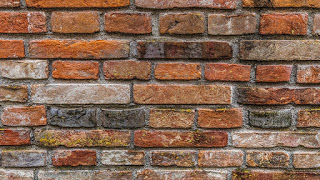 |
| Sure Ways to Prevent and Cure Efflorescence |
According to dictionaries the efflorescence is defined as:-
A change on the surface to a powdery substance upon exposure to air, as a crystalline substance through loss of water.
To become encrusted or covered with crystals of salt or the like through evaporation or chemical change.
Actually efflorescence is a deposit of water-soluble salts that are left on the surface of masonry as a crystalline powder sometimes white or brown or green or yellow after the water evaporates from the exterior surfaces upon exposure. You might have not seen any color other than white but still it exists depending on the type of salts etc.
This is a prominent
defect in brick masonry. In moist climate, in damp places, like basements or under leaky gutter, masonry often gets disfigured. Deposit originates from the mortar and frequently spreads over a part or entire face of the wall.
Absorbed water dissolves the salts of sodium, potassium and evaporating, forms a crystalline deposit on the surface. In addition to unsightly appearance, the crystallization of salts in the pores of the bricks or mortar may cause disruptive expansion resulting in disintegration due to cracking.
The problem of efflorescence is not new; its existence finds its way back in the prehistoric primitive times as the brick masonry was ever started and great piece of time, money and efforts have been made and spent trying to solve the difficulties generated by this persevering problem.
The timing of when the efflorescence appears is very critical, it open appears just after the completion of the structure and is thus named as “new building bloom”. And at this time the contractor, builder or architect are mostly concerned with the appearance of the new structure. The appearance of efflorescence is triggered by variation of temperature and is obvious during the winter, but may also be observed throughout the year following heavy rains and sudden drops in temperature. In summer, even after prolonged periods of rain, moisture evaporates so quickly that only small amounts of salt are transported to the surface. However, during winter, slower rates of evaporation lead to migration of salts to the surface.
This article will explain in detail about the sources of the efflorescence, how it works, about the attempts that are to be made in order to reduce its destructive effects and if it does appear the ways to remove it.
Sources and Causes of Efflorescence
In most general cases, the efflorescence is caused when the water gets mixed with masonry material and thus moving the salts to the surface and usually the free salts were created. In other cases when the free salts are readily available the free water dilutes it into a solution which is transported through brick masonry depositing it on the surface referred as efflorescence.
During detailed analysis of the efflorescence it was found that sometimes the salts which are deposited inside the brick masonry form a crystal depositing within the matrix of masonry called crytoflorescenc as it is not visible.
Conditions for Efflorescence
The subject of efflorescence is not that simple, it is a confusing mechanism and the real cause is hard to find sometimes. However, it is well known that there are three conditions that must be met in order for the efflorescence to appear.
- First: There must be water-soluble salts present somewhere in the wall
- Second: There must be sufficient moisture in the wall to render the salts into a solution
- Third: there must be a path for the soluble salts to migrate through to the surface where the moisture can evaporate, thus depositing the salts which can crystallize and cause efflorescence.
These three conditions must be simultaneously existed in any structure for the appearance of the efflorescence which means if any one of the cases does not exists than no efflorescence will appear.
Although the efflorescence is a complex problem, the prevention is not that difficult with economic and feasible steps there exists ways to reduce any one of the cases/conditions required and is thus making nearly impossible for efflorescence to occur.
Sources of Salts
The chemical reason and nature of efflorescence is very complex as there are many chemicals in the clay bricks, concrete blocks, mortar used, cement, lime, sand, admixture and ground water that can cause sulfates, carbonates, sodium bicarbonate or silicate to cause efflorescence. The efflorescence in green color which is often termed as “Green Stain” is a result of certain vanadium and molybdenum compounds present in some ceramic brick units. Similarly in brown color the efflorescence called “Brown stain” exists which is due to manganese deposits.
The appearance of efflorescence is generally not dependent on the quantity present of the water soluble salts as it is reported that even very small quantities of water soluble salts causes efflorescence. Sodium and potassium hydroxides are commonly present in Portland cements which may cause some efflorescence during the first year after construction. This is known as “Building-bloom”, a condition which typically disappears after a short while.
Moisture
If your house/building you are constructing is in areas of high annual rainfall than it must be considered in the initial stages and planning of project that the materials will be subjected to higher quantities of water both during and after construction making it more susceptible and liable for efflorescence. Similarly even if the rainfall is not more, the area is near sea where humidity is always more than in such areas the projects are also greater exposed for efflorescence potential.
As water is always needed for the salt to dissolve, which means if more water exists the more solution will be prepared and thus more salt will dissolve causing more efflorescence.
So after discussing sources and reasons of efflorescence we can conclude that detailed study of the following items is necessary for judging the reason and prevention measures for the efflorescence :-
1. Moisture
2. Construction Material
3. Temperature
Preventive and Controlling measures
Since many factors influence the formation of efflorescence, it is difficult to predict if and when any will appear: There is no accepted standard test method for reassuring the efflorescence potential of masonry mortar. Several experimental methods have been proposed, but none has been accepted as effectively predicting the performance of mortar materials in actual use.
After finding the reasons and causes of the efflorescence it will be easy for the one to control it prior to avoid the situation to get worsen. Even if the soluble alkali sulfates exist in a masonry wall, before the sulfates can cause efflorescence the salts must be dissolved into solution by water. If no moisture reaches the sulfates than they cannot be rendered into solution and migrate to the surface where the water will evaporate, leaving the sulfates salts on the surface to crystallize and become efflorescence. Attention must be given to preventing any soluble alkaline sulfates from being rendered into solution by water.
This is difficult since during construction water is naturally used in the mortar and grout; therefore the amount of water in the wall should be controlled to only reduce the amount necessary for actual construction. The majority of the water is absorbed into the masonry and used to chemically react with the Portland cement and hydrated me and is thus not free water.
To avoid Efflorescence do not use porous bricks in contact with limestone. Protect brickwork against contamination of salt-bearing materials during building operations. Bricks should be thoroughly soaked during construction. Correct design of DPC should be used.
Once the cause of efflorescence is corrected, the removal of the deposit is relatively easy, since most efflorescing salts are water soluble. In general, efflorescence can be removed by dry-brushing followed by flushing with clean water. If this is not satisfactory, walls can be washed with a five to ten percent solution of muriatic acid. It is always advisable that a small inconspicuous test area be tried first to determine whether etching or other discoloring will occur. After the acid treatment, the surface should be immediately and thoroughly flushed with clean water.
To summarize, three conditions must exist before efflorescence can occur. If these three conditions can be controlled, there should be no efflorescing of masonry walls.
1. Reduce all soluble alkali sulfates.
2. Use good details to prevent water from entering the masonry.
3. Use good construction practices to eliminate migratory paths for moisture.
Remember, it is very difficult to totally control any one of these three conditions, but it is relatively simple to reduce the effect each one has towards efflorescence. The following 5 simple ways are a sure way towards efflorescence free brick / block masonry for your project.
1. Limit Driving Moisture Force
2. Provide for good drainage
3. Construct good mortar joints
4. Ensure proper curing
5. Limit Water Entry













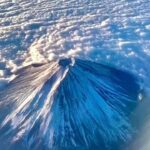
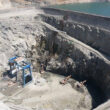

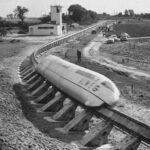
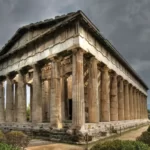



Nice Information, It is very helpful. Thank you very much and keep it up.
Nice Information, It is very helpful. Thank you very much and keep it up.
This comment has been removed by a blog administrator.
This comment has been removed by a blog administrator.